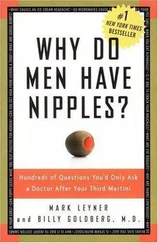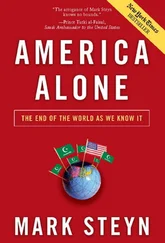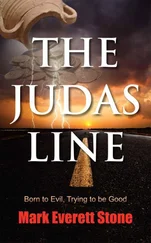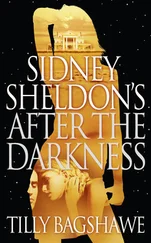“America the Beautiful” is not a nostalgic evocation of a pastoral landscape but a paean to its potential, including the gleaming metropolis. Miss Bates visited the Columbian Exposition in Chicago just before July 4, 1893, and she meant the word “alabaster” very literally: the centerpiece of the fair was the “White City” of the future, fourteen blocks of architectural marvels with marble facades painted white, and shining even whiter in the nightly glow of thousands of electric light bulbs, like a primitive prototype of Al Gore’s carbon-offset palace in Tennessee. They were good times, but even in bad the United States could still build marvels. Much of the New York skyline dates from the worst of times. As Fred Astaire and Ginger Rogers sang in the Thirties: “They all laughed at Rockefeller Center, Now they’re fighting to get in…”
The Empire State Building, then the tallest in the world, was put up in eighteen months during a depression—because the head of General Motors wanted to show the head of Chrysler that he could build something that went higher than the Chrysler Building. Three-quarters of a century later, the biggest thing either man’s successor had created was a mountain of unsustainable losses—and both GM and Chrysler were now owned and controlled by government and unions.
In the months after 9/11, I used to get the same joke emailed to me every few days: the proposed design for the replacement World Trade Center. A new skyscraper towering over the city, with the top looking like a stylized hand—three towers cut off at the joint, and the “middle finger” rising above them, flipping the bird not only to Osama bin Laden but also to Karlheinz Stockhausen and the sneering Euro-lefties and all the rest who rejoiced that day at America getting it, pow, right in the kisser: they all laughed at the Twin Towers takedown. Soon they’ll be fighting to get in to whatever reach-for-the-skies only-in-America edifice replaces it. The very word “skyscraper” is quintessentially American: it doesn’t literally scrape the sky, but hell, as soon as we figure out how to build an even more express elevator, there’s no reason why it shouldn’t.
But the years go by, and they stopped emailing that joke, because it’s not quite so funny after two, three, five, nine years of walking past Windows on the Hole every morning. It doesn’t matter what the eventual replacement building is at Ground Zero. The ten-year hole is the memorial: a gaping, multistory, multibillion-dollar pit, profound and eloquent in its nullity.
As for the gleam of a brand new “White City,” well, in the interests of saving the planet, Congress went and outlawed Edison’s light bulb. And on the grounds of the White City hymned by Katherine Lee Bates stands Hyde Park, home to community organizer Barack Obama, terrorist educator William Ayers, and Nation of Islam numerologist and Jeremiah Wright Award-winner Louis Farrakhan. That’s one fruited plain all of its own.
In the decade after 9/11, China (which America still thinks of as a cheap assembly plant for your local KrappiMart) built the Three Gorges Dam, the largest electricity-generating plant in the world. 20Dubai, a mere sub-jurisdiction of the United Arab Emirates, put up the world’s tallest building and built a Busby Berkeley geometric kaleidoscope of offshore artificial islands. 21Brazil, an emerging economic power, began diverting the Sao Francisco River to create some 400 miles of canals to irrigate its parched northeast. 22
But the hyperpower can’t put up a building.
Happily, there is one block in Lower Manhattan where ambitious redevelopment is in the air. In 2010, plans were announced to build a 15-story mosque at Ground Zero, on the site of an old Burlington Coat Factory damaged by airplane debris that Tuesday morning.
So, in the ruins of a building reduced to rubble in the name of Islam, a temple to Islam will arise.
A couple years after the events of that Tuesday morning, James Lileks, the bard of Minnesota, wrote:
If 9/11 had really changed us, there’d be a 150-story building on the site of the World Trade Center today. It would have a classical memorial in the plaza with allegorical figures representing Sorrow and Resolve, and a fountain watched over by stern stone eagles. Instead there’s a pit, and arguments over the usual muted dolorous abstraction approved by the National Association of Grief Counselors. 23
The best response to 9/11 on the home front—if only to demonstrate that there is a “home front” (which is the nub of al-Qaeda’s critique of a soft and decadent West)—would have been to rebuild the World Trade Center bigger, better, taller—not 150 stories, but 250, a marvel of the age. And, if there had to be “the usual muted dolorous abstraction,” the National Healing Circle would have been on the penthouse floor with a clear view all the way to al-Qaeda’s executive latrine in Waziristan.
Leslie Gelb, president emeritus of the Committee on Foreign Relations, is no right-winger but rather a sober, respected, judicious paragon of torpidly conventional wisdom. Nevertheless, musing on American decline, he writes, “The country’s economy, infrastructure, public schools and political system have been allowed to deteriorate. The result has been diminished economic strength, a less-vital democracy, and a mediocrity of spirit.” 24
That last is the one to watch: a great power can survive a lot of things, but not “a mediocrity of spirit.” A wealthy nation living on the accumulated cultural capital of a glorious past can dodge its rendezvous with fate, but only for so long. “ Si monumentum requiris, circumspice ” 25reads the inscription on the tomb of Sir Christopher Wren in St. Paul’s Cathedral: If you seek my monument, look around . After two-thirds of the City of London was destroyed in the Great Fire of 1666, Wren designed and rebuilt the capital’s tallest building (St. Paul’s), another fifty churches, and a new skyline for a devastated metropolis. Three centuries later, if you seek our monument, look in the hole.
It’s not about al-Qaeda. It’s about us.
CHAPTER TWO
UNDREAMING AMERICA
Serfing USA
Nothing is more senseless than to base so many expectations on the state, that is, to assume the existence of collective wisdom and foresight after taking for granted the existence of individual imbecility and improvidence.
—Frédéric Bastiat,
Economic Sophisms (1845)
There is a famous passage by Alexis de Tocqueville. Or, rather, it would be famous were he still widely read. For he knows us far better than we know him: “I would like to imagine with what new traits despotism could be produced in the world,” he wrote two centuries ago. He and his family had been on the sharp end of France’s violent convulsions and knew what forms despotism could take in Europe. But he considered that, to a democratic republic, there were slyer seductions:
I see an innumerable crowd of like and equal men who revolve on themselves without repose, procuring the small and vulgar pleasures with which they fill their souls.
“Small and vulgar pleasures”? I’ve nothing against Dancing with the Stars (which I rather enjoy) or American Idol (not so much), but Tocqueville’s right on the money there. “Revolving on themselves without repose”?
That’s not a bad description of a populace preoccupied with “social media.”
But then he goes on:
Over these is elevated an immense, tutelary power, which takes sole charge of assuring their enjoyment and of watching over their fate. It is absolute, attentive to detail, regular, provident, and gentle. It would resemble the paternal power if, like that power, it had as its object to prepare men for manhood, but it seeks, to the contrary, to keep them irrevocably fixed in childhood… it provides for their security, foresees and supplies their needs, guides them in their principal affairs….
Читать дальше











